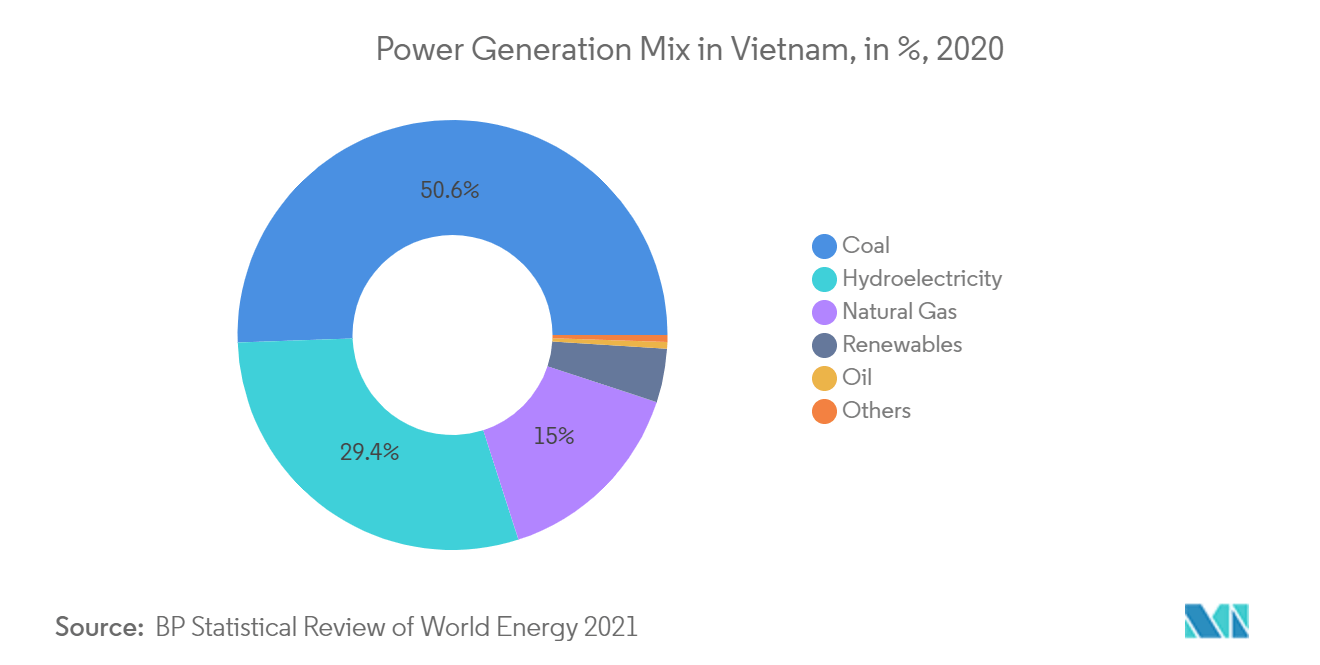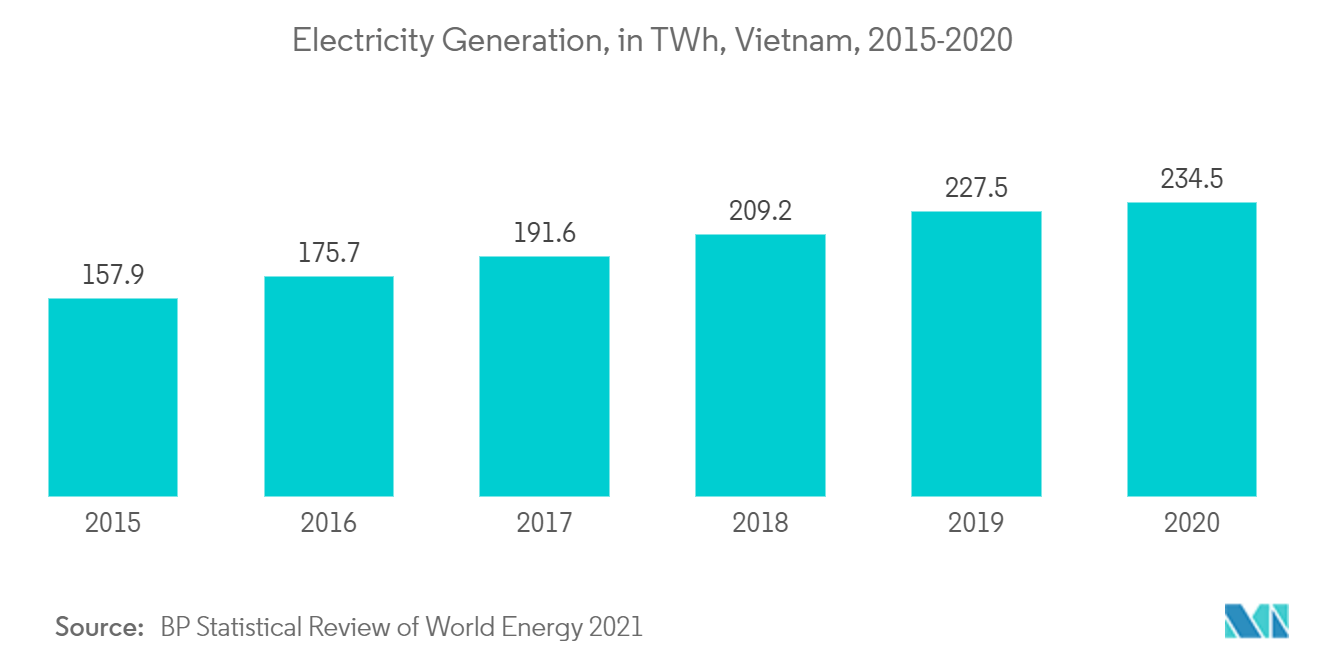Market Trends of Vietnam Power EPC Industry
This section covers the major market trends shaping the Vietnam Power EPC Market according to our research experts:
The Thermal Segment to Dominate the Market
- Power comes from various sources ranging from fossil fuels like coal and oil to renewable sources like wind and solar. The energy mix for electricity generation is dominated by fossil fuels like coal, oil, and natural gas.
- In 2020, more than 66% of electricity generated in Vietnam was through thermal power sources like coal, natural gas, and oil.
- The power generation mix is heavily skewed towards coal with a significant contribution because of cheaper domestic fuel availability. Its share in the mix has increased due to constraints in adding other conventional generation sources like hydro, nuclear, and gas.
- Coal generation in the Southeast Asian country is expected to be 177.7 terawatt-hours by 2030, providing almost 39% of its total power generation. This scenario is expected to impact the market throughout the study period positively.
- In December 2021, Mitsubishi and Korea Electric Power announced plans to begin the construction of the USD 2.2 billion Vung Ang II coal-fired power plant. The 1,200MW project is expected to start commercial operations in the third quarter of 2025.
- Thus, with the existing and upcoming plans for thermal power plants, the segment is likely to dominate during the forecast period.

Government Policies and Support are Expected to Drive the Market
- Government policies and support for electricity generation and the increase in investments for electricity transmission will drive the Vietnam Power market during the forecast period.
- Vietnam has adequate power generation capacity, but it has some proportion of the population with limited access to electricity because of the lack of a proper grid network and infrastructure. To ensure the supply of reliable electricity for all, there is a demand for a transmission network. Thus, investments have been made to expand the transmission network in Vietnam.
- As per Vietnam's Eighth Electricity Plan Draft, it is estimated that during the 2021-2030 period, Vietnam needs to build additional 500 kV substations with a total capacity of 86 GVA and approximately 13,000 kilometers of transmission lines.
- Additionally, Vietnam's electricity capacity is expected to increase by an annual average of 5.7% between 2021 and 2030, reaching 129.5GW by 2030. Also, USD 148 billion worth of investments are planned to increase power generation and develop the electricity network, out of which 74% will be directed to power sources and 26% to grid development for 2021 - 2030.
- In recent years, the Vietnamese government has also funded various transmission projects to ensure the reliable supply of electricity in multiple locations. Vietnam's Ministry of Industry and Trade (MOIT), under its draft PDP8, estimates the need for USD 32.9 billion to develop its power grids between 2021-2030. The plan proposes expanding a 500kV transmission system to transmit power from power source centers in the central and southern regions to larger load centers in the Red River Delta and Ho Chi Minh City.
- In 2020, Vietnam generated 234.5 terawatt-hours (TWh) of electricity, up from 157.9 terawatt-hours (TWh) in 2015. The power generation capacity is expected to increase from conventional and renewable sources in the coming years. Through various government-led schemes, the country has made significant strides in improving access to power among communes and rural communities.
- Therefore, government support and policies to ensure power distribution and allocation of investments to develop transmission lines and towers to cater to consumer demand are expected to drive the power EPC market in Vietnam during the forecast period.


